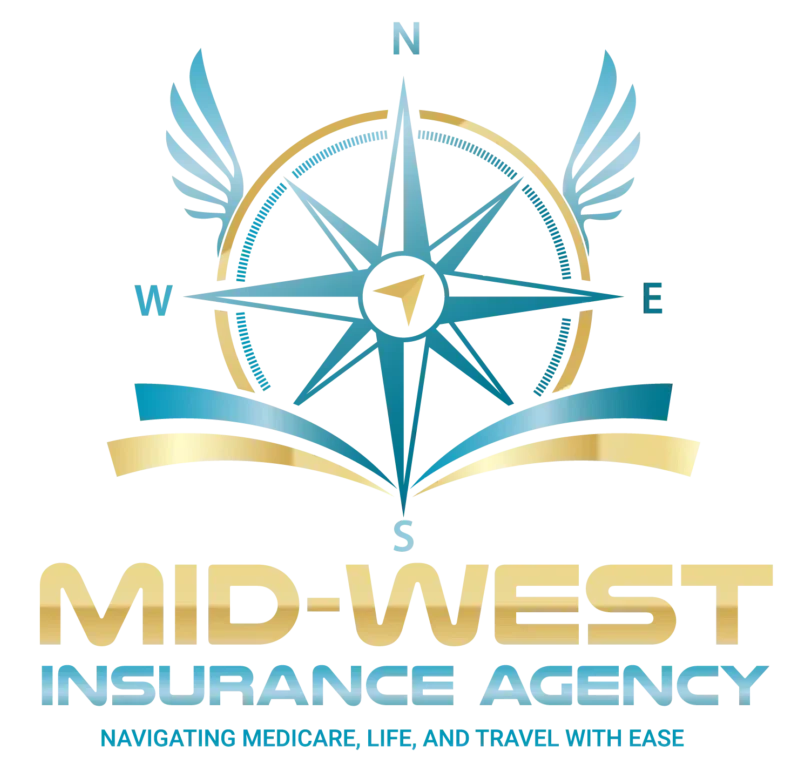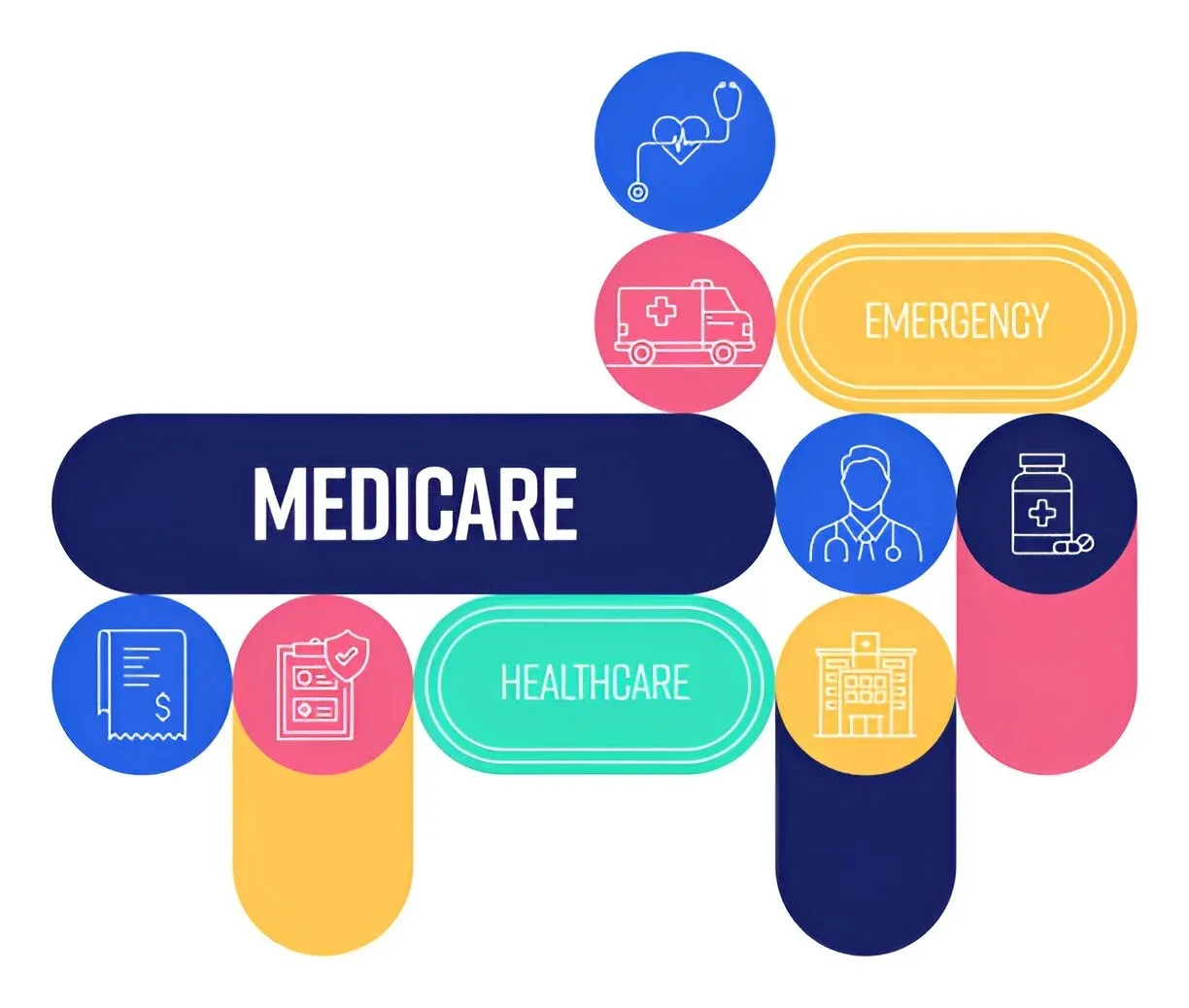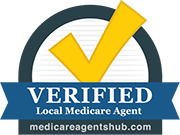Navigating the complexities of Medicare can be challenging, but understanding how to maximize your benefits can significantly improve your healthcare experience and financial well-being. Medicare is designed to provide essential health coverage, but it’s up to you to make the most of it. In this comprehensive guide, we’ll explore practical tips and strategies to help you maximize your Medicare benefits and ensure you’re getting the most value from your coverage.

Understanding Medicare Basics
Before diving into how to maximize your Medicare benefits, it’s essential to have a clear understanding of what Medicare offers:
What is Medicare?
Medicare is a federal health insurance program primarily for individuals aged 65 and older. It has four parts:
- Part A: Hospital Insurance – Covers inpatient hospital stays, skilled nursing facility care, hospice care, and some home health care.
- Part B: Medical Insurance – Covers outpatient care, doctor visits, preventive services, and some home health care.
- Part C: Medicare Advantage – A bundled plan that includes Part A, Part B, and usually Part D (prescription drug coverage). Offered by private insurance companies.
- Part D: Prescription Drug Coverage – Provides prescription drug coverage through private insurance companies.
Key Terminology
- Premium: The amount you pay for your insurance every month.
- Deductible: The amount you must pay out-of-pocket before your plan starts to pay.
- Copayment: A fixed amount you pay for a covered service after reaching your deductible.
- Coinsurance: The percentage of costs you share with your plan after reaching your deductible.

Choosing the Right Medicare Plan
Selecting the right Medicare plan is crucial for maximizing your benefits. Here’s how to choose wisely:
Compare Medicare Advantage and Original Medicare
Medicare Advantage (Part C) Plans:
- Coverage: Includes all services covered by Original Medicare (Part A and Part B) and often additional benefits like vision, dental, and hearing.
- Costs: Typically includes a monthly premium in addition to the Part B premium and may have different out-of-pocket costs.
Original Medicare (Parts A and B):
- Coverage: Provides basic coverage for hospital and medical services. You may need to purchase a separate Part D plan for prescription drugs and a Medigap policy for additional coverage.
- Costs: Separate premiums, deductibles, and copayments for Parts A and B.
Tip: Use the Medicare Plan Finder tool on the Medicare website to compare plans based on your needs and preferences.
Review Your Current Health Needs
Assess your current health needs and consider the following:
- Frequency of Doctor Visits: How often do you visit healthcare providers?
- Prescription Medications: What medications do you need, and are they covered under the plan?
- Specialist Care: Do you need access to specific specialists or treatments?
Tip: Make a list of your healthcare needs and compare how different plans cover these needs.

Taking Advantage of Preventive Services
Medicare covers many preventive services at no additional cost to you. Utilizing these services can help you stay healthy and avoid future medical issues.
Preventive Services Covered by Medicare
- Annual Wellness Visits: Comprehensive check-ups to assess your health and prevent future problems.
- Screenings: Includes screenings for cancer (e.g., mammograms, colonoscopies), cardiovascular conditions, diabetes, and osteoporosis.
- Immunizations: Covers flu shots, pneumococcal vaccines, and hepatitis B shots.
Tip: Schedule your preventive services during your annual wellness visit to make the most of these benefits.
Health Promotion Programs
Medicare also offers programs to help manage chronic conditions and promote health:
- Chronic Care Management: Programs for managing chronic conditions like diabetes and heart disease.
- Smoking Cessation: Counseling and support for quitting smoking.
Tip: Check with your healthcare provider or Medicare plan to see if you qualify for additional programs and support.

Managing Prescription Drug Costs
Prescription drugs can be a significant expense, but there are ways to manage and reduce these costs.
Understanding Part D Coverage
Medicare Part D provides prescription drug coverage. Here’s how to maximize your benefits:
- Review Formularies: Check your plan’s formulary (list of covered drugs) to ensure your medications are included.
- Use Preferred Pharmacies: Some plans offer lower costs at preferred network pharmacies.
- Check for Generic Options: Ask your doctor if a generic version of your medication is available.
Tip: Use the Medicare Plan Finder tool to compare Part D plans based on drug coverage and costs.
Cost-Saving Strategies
- Apply for Extra Help: If you have limited income, you may qualify for Extra Help with drug costs.
- Explore Discount Programs: Some drug manufacturers and pharmacies offer discount programs or coupons.
- Review Annual Plan Changes: Part D plans can change each year, so review your plan annually to ensure it still meets your needs.
Tip: Schedule an annual review of your prescription drug plan during open enrollment to ensure you’re getting the best coverage and cost.

Utilizing Medigap Policies
Medigap policies help cover costs that Original Medicare doesn’t, such as deductibles, copayments, and coinsurance.
Types of Medigap Policies
- Plan A: Basic benefits, including hospital and medical coinsurance.
- Plan G: Covers most out-of-pocket costs except the Part B deductible.
- Plan N: Offers lower premiums with some cost-sharing for office visits and emergency room care.
Tip: Compare different Medigap plans to find one that best suits your needs and budget. Consider factors like coverage, premiums, and out-of-pocket costs.
Enrollment Tips
- Sign Up Early: The best time to buy a Medigap policy is during your Medigap Open Enrollment Period (the six-month period that starts when you’re 65 and enrolled in Part B).
- Compare Plans: Use the Medicare website or consult with a broker to compare Medigap plans and rates.
Tip: Regularly review your Medigap policy to ensure it continues to meet your needs and consider switching plans if better options become available.

Staying Informed and Making Adjustments
Medicare plans and coverage options can change annually, so staying informed and making necessary adjustments is essential.
Annual Enrollment Periods
- Open Enrollment Period: Runs from October 15 to December 7 each year. This is the time to review and make changes to your Medicare Advantage and Part D plans.
- Medigap Open Enrollment Period: A one-time period when you can purchase any Medigap policy without medical underwriting.
Tip: Use the annual enrollment period to review your current plans, check for new plan options, and make changes if necessary.
Seeking Professional Help
If you’re unsure about your Medicare options or need assistance with enrollment:
- Consult a Medicare Broker: A Medicare broker can help you compare plans and find the best option for your needs.
- Visit Medicare.gov: The official Medicare website offers resources and tools for understanding and managing your benefits.
Tip: Schedule a consultation with a Medicare expert to ensure you’re making the best choices for your healthcare needs.

Conclusion: Making the Most of Your Medicare Benefits
Maximizing your Medicare benefits involves understanding your options, taking advantage of preventive services, managing prescription costs, utilizing additional policies like Medigap, and staying informed about changes. By following these tips and strategies, you can ensure that you’re getting the most value from your Medicare coverage and maintaining your health and financial well-being.
Key Takeaways:
- Choose Wisely: Select the Medicare plan that best meets your healthcare needs and budget.
- Use Preventive Services: Take advantage of Medicare’s preventive services to stay healthy.
- Manage Costs: Explore options for reducing prescription drug costs and utilizing Medigap coverage.
- Stay Informed: Review your Medicare plans annually and seek professional help if needed.
For personalized assistance or more information on maximizing your Medicare benefits, visit www.mwiallc.com or contact our team of experts. We’re here to help you navigate the complexities of Medicare and make the most of your healthcare coverage.
This blog provides a detailed guide to maximizing Medicare benefits, offering practical tips and strategies for seniors to ensure they’re getting the most value from their coverage. By addressing key areas such as plan selection, preventive services, prescription drug management, and additional policies, it aims to empower seniors to make informed decisions about their Medicare benefits.
Discover practical advice for staying healthy, active, and mentally sharp as you age. Embracing a healthy lifestyle can enhance your quality of life and help you stay independent longer.

Stay Physically Active
Regular physical activity is crucial for maintaining mobility, strength, and overall health. Here are some tips:- Exercise Regularly: Aim for at least 150 minutes of moderate-intensity aerobic activity, such as brisk walking, each week. Include muscle-strengthening activities on two or more days a week.
- Incorporate Balance Exercises: Practice balance exercises like tai chi or yoga to reduce the risk of falls.
- Stay Flexible: Engage in stretching exercises to maintain flexibility and range of motion.
Eat a Balanced Diet
Good nutrition supports healthy aging. Focus on a balanced diet with these tips:- Eat a Variety of Foods: Include fruits, vegetables, whole grains, lean proteins, and healthy fats in your diet.
- Stay Hydrated: Drink plenty of water throughout the day to stay hydrated.
- Limit Processed Foods: Reduce your intake of processed foods, sugar, and saturated fats.
- Consider Supplements: Consult your doctor about any necessary supplements, such as calcium, vitamin D, or B12.
Keep Your Mind Active
Mental stimulation is essential for cognitive health. Keep your mind sharp with these activities:- Engage in Puzzles and Games: Challenge your brain with puzzles, crosswords, and strategy games.
- Learn New Skills: Take up new hobbies or learn something new, such as a language or musical instrument.
- Read Regularly: Read books, newspapers, or magazines to stay informed and mentally engaged.
- Socialize: Stay connected with friends and family. Join clubs, volunteer, or participate in community activities to maintain social interactions.
Prioritize Mental Health
Emotional well-being is just as important as physical health. Here’s how to take care of your mental health:- Practice Mindfulness: Engage in mindfulness practices such as meditation, deep breathing, or yoga to reduce stress.
- Stay Positive: Focus on positive thinking and gratitude. Keep a journal to reflect on things you’re thankful for.
- Seek Help When Needed: If you’re feeling overwhelmed, anxious, or depressed, don’t hesitate to seek professional help.
Get Regular Check-Ups
Routine medical check-ups can help prevent and manage health issues. Follow these guidelines:- Schedule Regular Visits: See your healthcare provider for regular check-ups and screenings.
- Stay Up-to-Date on Vaccinations: Ensure you receive recommended vaccinations, such as flu shots and shingles vaccines.
- Manage Chronic Conditions: If you have chronic conditions like diabetes, high blood pressure, or arthritis, follow your treatment plan and monitor your health closely.
Sleep Well
Quality sleep is vital for overall health. Improve your sleep with these tips:- Establish a Routine: Go to bed and wake up at the same time each day, even on weekends.
- Create a Restful Environment: Keep your bedroom cool, dark, and quiet. Invest in a comfortable mattress and pillows.
- Limit Screen Time: Avoid screens (phones, tablets, TVs) at least an hour before bedtime.
Stay Safe at Home
Create a safe living environment to prevent accidents and injuries:- Remove Hazards: Eliminate tripping hazards like loose rugs and clutter. Install grab bars in bathrooms and railings on stairs.
- Improve Lighting: Ensure your home is well-lit, especially stairways and hallways.
- Wear Proper Footwear: Choose supportive, non-slip shoes to reduce the risk of falls.
Stay Connected
Social connections are important for emotional and mental health. Stay connected with these tips:- Maintain Relationships: Keep in touch with family and friends through regular phone calls, visits, or video chats.
- Join Groups: Participate in clubs, religious groups, or community centers to meet new people and stay engaged.
- Volunteer: Volunteering is a great way to stay active, meet people, and contribute to your community.
💡 Tip: Implement small changes to your daily routine to support healthy aging. For personalized health and wellness advice, contact @midwestinsuranceagency today!
Navigating the complexities of Medicare can be challenging, but understanding how to maximize your benefits can significantly improve your healthcare experience and financial well-being. Medicare is designed to provide essential health coverage, but it’s up to you to make the most of it. In this comprehensive guide, we’ll explore practical tips and strategies to help you maximize your Medicare benefits and ensure you’re getting the most value from your coverage.
1. Understanding Medicare Basics
Before diving into how to maximize your Medicare benefits, it’s essential to have a clear understanding of what Medicare offers:1.1 What is Medicare?
Medicare is a federal health insurance program primarily for individuals aged 65 and older. It has four parts:- Part A: Hospital Insurance – Covers inpatient hospital stays, skilled nursing facility care, hospice care, and some home health care.
- Part B: Medical Insurance – Covers outpatient care, doctor visits, preventive services, and some home health care.
- Part C: Medicare Advantage – A bundled plan that includes Part A, Part B, and usually Part D (prescription drug coverage). Offered by private insurance companies.
- Part D: Prescription Drug Coverage – Provides prescription drug coverage through private insurance companies.
1.2 Key Terminology
- Premium: The amount you pay for your insurance every month.
- Deductible: The amount you must pay out-of-pocket before your plan starts to pay.
- Copayment: A fixed amount you pay for a covered service after reaching your deductible.
- Coinsurance: The percentage of costs you share with your plan after reaching your deductible.
2. Choosing the Right Medicare Plan
Selecting the right Medicare plan is crucial for maximizing your benefits. Here’s how to choose wisely:2.1 Compare Medicare Advantage and Original Medicare
Medicare Advantage (Part C) Plans:- Coverage: Includes all services covered by Original Medicare (Part A and Part B) and often additional benefits like vision, dental, and hearing.
- Costs: Typically includes a monthly premium in addition to the Part B premium and may have different out-of-pocket costs.
- Coverage: Provides basic coverage for hospital and medical services. You may need to purchase a separate Part D plan for prescription drugs and a Medigap policy for additional coverage.
- Costs: Separate premiums, deductibles, and copayments for Parts A and B.
2.2 Review Your Current Health Needs
Assess your current health needs and consider the following:- Frequency of Doctor Visits: How often do you visit healthcare providers?
- Prescription Medications: What medications do you need, and are they covered under the plan?
- Specialist Care: Do you need access to specific specialists or treatments?
3. Taking Advantage of Preventive Services
Medicare covers many preventive services at no additional cost to you. Utilizing these services can help you stay healthy and avoid future medical issues.3.1 Preventive Services Covered by Medicare
- Annual Wellness Visits: Comprehensive check-ups to assess your health and prevent future problems.
- Screenings: Includes screenings for cancer (e.g., mammograms, colonoscopies), cardiovascular conditions, diabetes, and osteoporosis.
- Immunizations: Covers flu shots, pneumococcal vaccines, and hepatitis B shots.
3.2 Health Promotion Programs
Medicare also offers programs to help manage chronic conditions and promote health:- Chronic Care Management: Programs for managing chronic conditions like diabetes and heart disease.
- Smoking Cessation: Counseling and support for quitting smoking.
4. Managing Prescription Drug Costs
Prescription drugs can be a significant expense, but there are ways to manage and reduce these costs.4.1 Understanding Part D Coverage
Medicare Part D provides prescription drug coverage. Here’s how to maximize your benefits:- Review Formularies: Check your plan’s formulary (list of covered drugs) to ensure your medications are included.
- Use Preferred Pharmacies: Some plans offer lower costs at preferred network pharmacies.
- Check for Generic Options: Ask your doctor if a generic version of your medication is available.
4.2 Cost-Saving Strategies
- Apply for Extra Help: If you have limited income, you may qualify for Extra Help with drug costs.
- Explore Discount Programs: Some drug manufacturers and pharmacies offer discount programs or coupons.
- Review Annual Plan Changes: Part D plans can change each year, so review your plan annually to ensure it still meets your needs.
5. Utilizing Medigap Policies
Medigap policies help cover costs that Original Medicare doesn’t, such as deductibles, copayments, and coinsurance.5.1 Types of Medigap Policies
- Plan A: Basic benefits, including hospital and medical coinsurance.
- Plan G: Covers most out-of-pocket costs except the Part B deductible.
- Plan N: Offers lower premiums with some cost-sharing for office visits and emergency room care.
5.2 Enrollment Tips
- Sign Up Early: The best time to buy a Medigap policy is during your Medigap Open Enrollment Period (the six-month period that starts when you’re 65 and enrolled in Part B).
- Compare Plans: Use the Medicare website or consult with a broker to compare Medigap plans and rates.
6. Staying Informed and Making Adjustments
Medicare plans and coverage options can change annually, so staying informed and making necessary adjustments is essential.6.1 Annual Enrollment Periods
- Open Enrollment Period: Runs from October 15 to December 7 each year. This is the time to review and make changes to your Medicare Advantage and Part D plans.
- Medigap Open Enrollment Period: A one-time period when you can purchase any Medigap policy without medical underwriting.
6.2 Seeking Professional Help
If you’re unsure about your Medicare options or need assistance with enrollment:- Consult a Medicare Broker: A Medicare broker can help you compare plans and find the best option for your needs.
- Visit Medicare.gov: The official Medicare website offers resources and tools for understanding and managing your benefits.
7. Conclusion: Making the Most of Your Medicare Benefits
Maximizing your Medicare benefits involves understanding your options, taking advantage of preventive services, managing prescription costs, utilizing additional policies like Medigap, and staying informed about changes. By following these tips and strategies, you can ensure that you’re getting the most value from your Medicare coverage and maintaining your health and financial well-being. Key Takeaways:- Choose Wisely: Select the Medicare plan that best meets your healthcare needs and budget.
- Use Preventive Services: Take advantage of Medicare’s preventive services to stay healthy.
- Manage Costs: Explore options for reducing prescription drug costs and utilizing Medigap coverage.
- Stay Informed: Review your Medicare plans annually and seek professional help if needed.
This blog provides a detailed guide to maximizing Medicare benefits, offering practical tips and strategies for seniors to ensure they’re getting the most value from their coverage. By addressing key areas such as plan selection, preventive services, prescription drug management, and additional policies, it aims to empower seniors to make informed decisions about their Medicare benefits.















